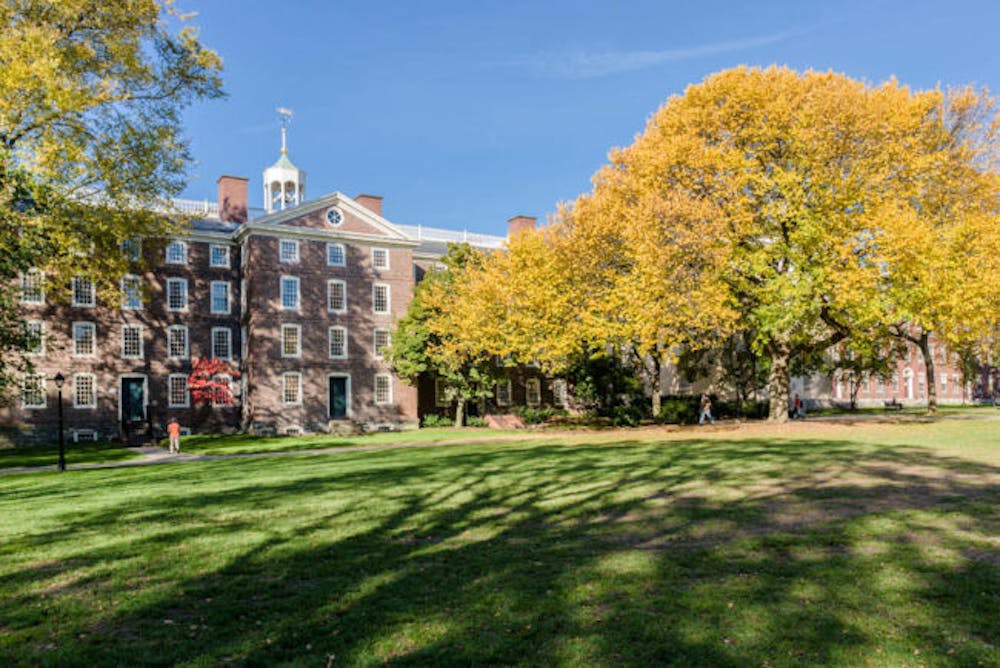“We attend a university that is obsessed with the optics of our black and brown faces, but is indifferent to the justice we seek,” wrote Cornell University’s Black Students United. After reading that statement I thought to myself, “Don’t we all?”
Most of us have heard about the Diversity and Inclusion Action Plan, Brown’s attempt at increasing minority representation in the University’s faculty and student bodies. And while the plan has potential for success, perhaps its most egregious shortcoming is its failure to differentiate between students who are black and those who are African-American. Consequently, there are no provisions to ensure that historically disadvantaged black folks within the United States will receive some of the restitution that they deserve. If the University truly seeks to build a more inclusive community, then it must make an effort to acknowledge the plurality of the black experience in America.
In September of this year, Black Students United, an organization for students at Cornell who identify with the African diaspora, presented a list of demands for the advancement of black and brown students. Among the most notable of these demands was a push for the admissions board to increase the presence of underrepresented black students on Cornell’s campus . The group further defined “underrepresented Black students as Black Americans who have several generations (more than two) in this country.”
I’ve often wondered how we should define blackness and who should have the power to do so. Black Students United essentially required their school’s administration to not only acknowledge that there are different types of blackness in America, but also to cater to a specific group within the larger umbrella group of black Americans. But how does one tell the difference between a black American and an African-American? The answer usually differs depending on who you talk to. In my understanding, the term African-American refers to black folks whose families have lived in the United States since the time of the Atlantic slave trade. Black American, on the other hand, can mean anyone residing in the United States who is grouped as black based on their skin color.
These definitions stem from my own experiences, though, and while we could sit around for months discussing the complexity of the black identity in the United States, what good would that actually do? Most people don’t see a visual difference between an African immigrant and an African-American person descended from slavery — they just see blackness. So, some may ask, why waste our energy bickering amongst ourselves to decide who is more oppressed than whom? It seems to many that by distinguishing between different types of blackness, groups like Black Students United will only further divide black communities and undermine the goals of solidarity.
However, we must dispel the common belief that policies like the DIAP and affirmative action have been successful in assisting those from historically disadvantaged backgrounds. Take a look at Brown’s campus: Many black students at this university are of direct African descent, meaning that either their parents or they themselves emigrated to the United States from an African country. Even more interesting is the fact that oftentimes, these students (myself included) are Nigerian. A 2014 opinions piece in the New York Times stated that although they account for less than 1 percent of America’s black population, Nigerians make up almost a quarter of all of the black students at Harvard Business School. And while only 11 percent of white Americans have a graduate degree, over a fourth of Nigerian-Americans hold that same qualification.
It is important for us to realize that people of the modern African diaspora (i.e., mid-20th century onwards) did not have to suffer through American slavery, Jim Crow segregation, redlining, voter suppression or any of the other horrible circumstances under which African-Americans have lived for centuries. The sad truth is that through the “positive discrimination” policies meant to correct these atrocities, over-performing African students have benefitted at the cost of their less privileged African-American counterparts.
But when the Common App asks an applicant to indicate their race, the Black/African-American checkbox takes none of these nuances into account. The result is exactly what you see on Brown’s campus: a disproportionately large number of high-achieving (and often financially privileged) first or second generation African students, lumped together with a handful of African-American students. If affirmative action worked the way it was intended — to “end and correct the effects of a specific form of discrimination” — these statistics would surely be reversed.
Until that time comes, we must begin to see blackness for what it is: an arbitrary concept invented for the convenience of white supremacists. On top of that, we must also begin to see blackness for what it can become. Blackness as I’ve known it can be a movement, a musical genre, a death sentence, a community, a blessing and a curse. There is no one way to be black — blackness is beautiful because it has no limits. Therefore, we deserve to be seen by the University not as a collective group that needs saving, but as unique individuals, each with our own personal struggles, surviving and thriving in a world that constantly tries to box us in.
Bami Oke ’20 can be reached at bamidele_oke@brown.edu. Please send responses to this opinion to letters@browndailyherald.com and other op-eds to opinions@browndailyherald.com.





